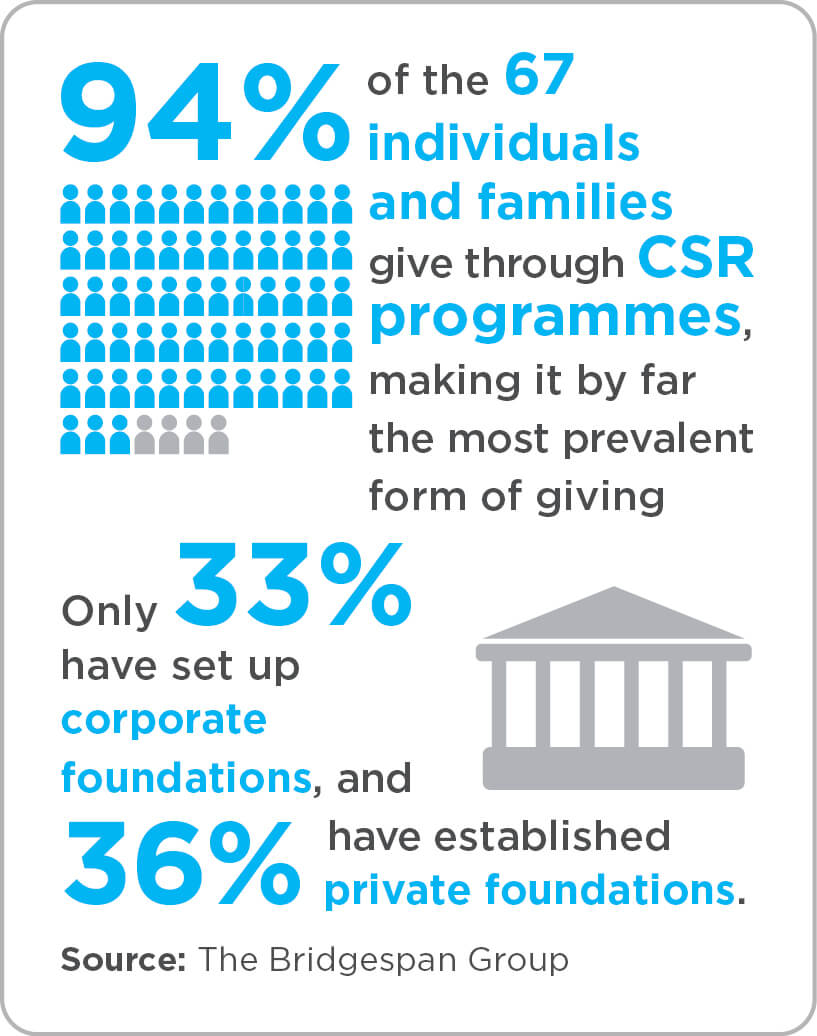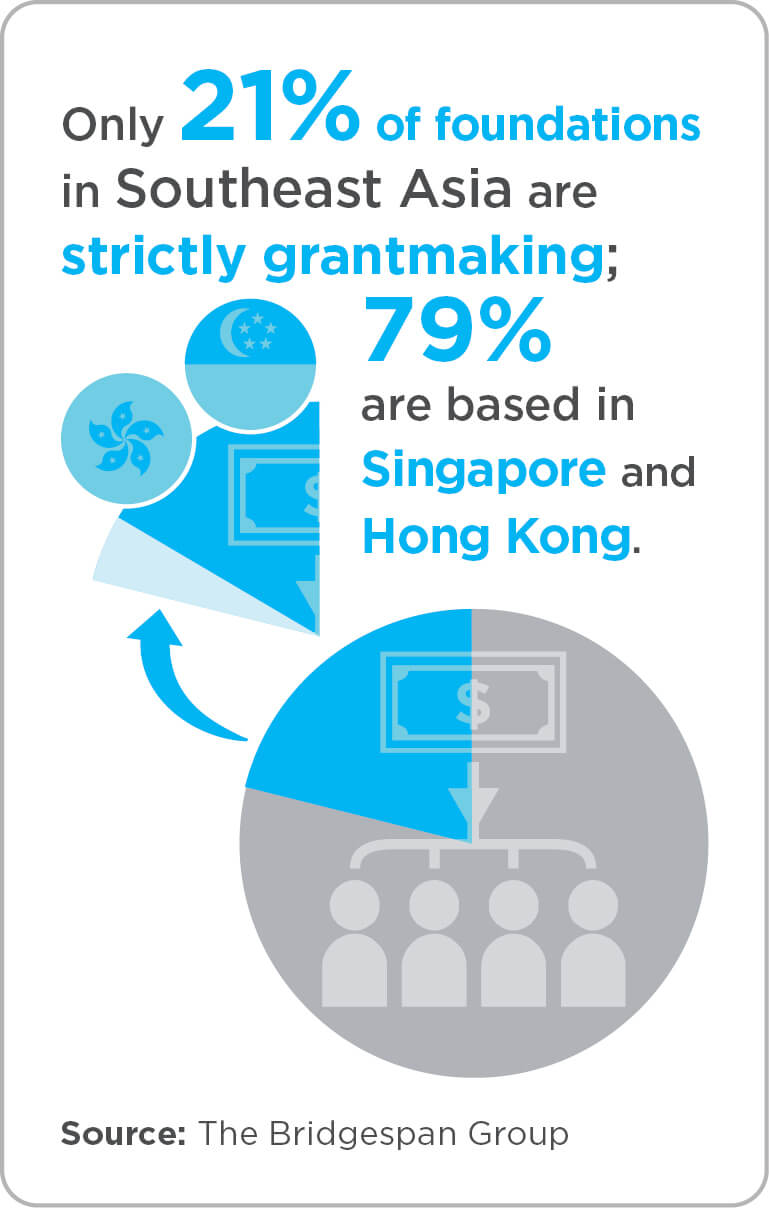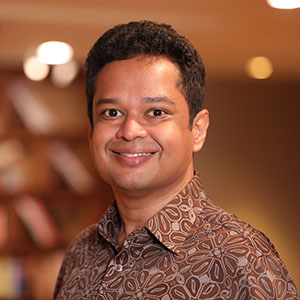Executive Summary
Asia is now home to more billionaires —951, according to Nikkei Asia— than the United States or Europe. And the continent’s wealthy are ready to lean into philanthropy more; in one poll of business leaders, nine out of 10 reported their intention to engage in more public/private partnerships for social good and to spend more to address environmental challenges. If they follow through on their intentions and match the level of philanthropic spending in the United States, as much as US$701 billion per year would be unlocked.
Asia’s wealth holders are poised to seize that opportunity. But will they?
To better understand how the Asian philanthropic landscape might unfold, we looked at the philanthropic endeavours of the 67 wealthiest individuals and families in Southeast Asia’s six largest economies—Indonesia, Malaysia, the Philippines, Singapore, Thailand, and Vietnam. We also included Hong Kong, where families, wealth, and business interests overlap extensively with both Southeast Asia and China. (The billionaires list came from the Forbes 2023 ranking of the 10 wealthiest families in each jurisdiction.)
Despite differences in national culture, experience, and aspirations, three common approaches emerged. These approaches shape a widely acknowledged “Asian way” of philanthropy, which is consistent with and builds upon a rich heritage across Asian cultures that deeply values charitable giving, the importance of relationships, and the role of government as an agent for social good.
1. Using business as a platform to create social or environmental change. Across Southeast Asia, business and philanthropy are deeply intertwined. In fact, it’s hard to separate business philanthropy and family philanthropy, given that families for the most part still control the enterprises that generate their wealth and draw on those resources for their philanthropy.

Our analysis underscores this close relationship. Most foundations in Asia are affiliated with corporate sponsors or are government-backed rather than privately funded. Ninety-four percent of the 67 individuals and families we studied give through corporate social responsibility (CSR) programmes, making it by far the most prevalent form of giving. Only 33 percent have set up corporate foundations, while 36 percent have established private foundations.
2. Establishing philanthropic operating foundations that design and carry out programmes. Three-quarters of the foundations associated with Southeast Asia’s wealthiest families are operating foundations, which means they design and carry out their own projects rather than give grants to nonprofits that do the work. Half function exclusively as operating foundations. Only 21 percent are strictly grantmaking foundations, of which 79 percent are based in Singapore and Hong Kong.
Not surprisingly, Asian operating foundations require hands-on management by their sponsors, a role often played by business owners or family members. Two-thirds (70 percent) of the philanthropists, or their children, in our analysis are either part of the management team or the board of directors of their affiliated foundations.

3. Building lasting partnerships with governments around complementary strengths to achieve scalable social change. Across Asia, many business families have worked closely with their governments in pursuing mutual interests in developing civil society, in what some leaders in the region call “nation building.” Given that business and philanthropy are so intertwined, business families also seek to work closely with the government in their philanthropic efforts. (For more on collaborating with the government, see “How Asian Philanthropists Work with the Government: A View from the Field.”)
Governments increasingly acknowledge the benefits of working with the private sector on pressing social or environmental issues. Our analysis of the wealthiest families’ giving bears this out. Forty percent explicitly cite government collaboration as a critical lever in work.
As wealth grows across Asian countries, the “Asian way” of giving likely will continue to shape how individuals and families think about philanthropy. But to close the gap between rising wealth and growing need, wealth holders will need to consider giving more. While Asia’s wealthiest individuals and families already give generously to social causes, the potential is even greater.
Imagine what could be accomplished if Asia’s wealth holders followed through on their intentions and significantly increased their giving. Their generosity would have an enduring impact on advancing the region’s social and environmental progress.





